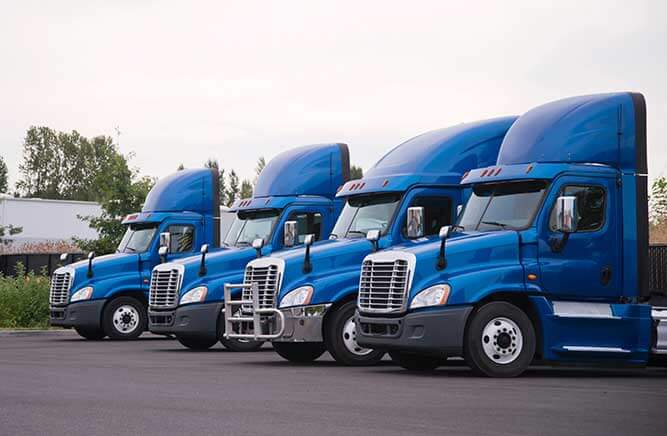The trucking industry has long been a pillar of the global supply chain, transporting goods across cities, states, and borders with speed and efficiency. Yet, despite its critical role in the economy, the trucking world is no stranger to challenges. Rising fuel costs, driver shortages, regulatory changes, and economic downturns have all tested the resilience of the industry. Now, another disruption is making headlines—a major Trucking Company Files Chapter 11 bankruptcy, sending ripples through the transportation sector.
This recent financial collapse isn’t just about one company going under. It reflects deeper issues brewing across the industry and raises important questions for truckers, logistics companies, shippers, and even consumers. In this post, we’ll explore the implications of the latest bankruptcy, what it signals for the future of trucking, and how businesses and workers can prepare for the road ahead.
Understanding Chapter 11 in the Trucking Context
Before diving into the broader implications, it’s essential to understand what Chapter 11 bankruptcy actually means. In simple terms, Chapter 11 allows a business to reorganize its debts under court supervision. Unlike Chapter 7, which involves liquidation, Chapter 11 is designed to give companies breathing room to restructure and, ideally, emerge stronger.
For trucking companies, this process is particularly complex. Trucks, trailers, and other equipment are often purchased on credit or leased. Routes, contracts, and customer relationships are key assets. Filing Chapter 11 may involve renegotiating lease agreements, shedding unprofitable routes, and laying off employees—moves that create uncertainty across the logistics chain.
So, when a prominent trucking company files Chapter 11, it’s not just about financial recovery; it becomes a strategic reshaping of operations that can affect the entire ecosystem.
What This Means for Freight Markets and Capacity
One of the most immediate impacts of a trucking company’s bankruptcy is the sudden reduction in freight capacity. Even if the company continues limited operations during restructuring, its ability to haul freight is typically reduced. This creates a short-term tightening in freight markets, especially in regions where the company previously had a strong presence.
Shippers may face rising spot market rates as they scramble to find alternative carriers. Load boards can become more competitive, and smaller operators might be called in to fill the gap. However, this temporary disruption also creates an opportunity for well-positioned carriers to absorb new business and expand their footprint.
Still, the long-term impact depends on whether the bankrupt carrier survives post-restructuring. If they shut down operations entirely, those shipping lanes and customer accounts will be up for grabs—reshaping regional freight dynamics.
Drivers and Employees: A Workforce in Limbo
Perhaps the most personal and disruptive effect of a trucking bankruptcy is felt by the drivers and support staff. Truckers, dispatchers, mechanics, and administrative personnel are suddenly faced with uncertainty—will they keep their jobs? Will wages be paid? What happens to benefits?
Truck drivers, in particular, may find themselves stranded with equipment that suddenly becomes inoperable or recalled by the leasing company. Others may be left with unpaid fuel cards or denied access to terminals. For independent owner-operators leased to the company, it can be even more financially devastating.
While the job market in trucking remains strong overall, with many companies still desperate for qualified drivers, the transition is rarely smooth. A sudden bankruptcy disrupts lives and careers, often leaving a bitter taste among former employees and a loss of experienced talent in the sector.
Industry Trends Behind the Bankruptcy
Though each bankruptcy has its unique circumstances, certain industry-wide trends may have contributed to this downfall:
1. Excess Capacity and Freight Recession
Over the last few years, the trucking market has experienced a cycle of high demand followed by a steep drop-off. The post-pandemic surge in shipping created a boom period that encouraged aggressive expansion. But as demand cooled and inventories normalized, many carriers found themselves with more trucks than freight—leading to falling rates and thin margins.
2. Soaring Operating Costs
Diesel prices, maintenance expenses, insurance premiums, and regulatory compliance costs have all been on the rise. For mid-sized carriers without strong cash reserves, these costs can quickly become overwhelming.
3. Driver Shortage and Retention Challenges
Even in 2025, driver recruitment remains a major hurdle. High turnover rates and increased demands for better pay and working conditions have created significant labor challenges. Companies that couldn’t adapt to these expectations found themselves at a competitive disadvantage.
4. Heavy Debt Loads
In an effort to expand or survive earlier disruptions, many trucking companies took on significant debt. As interest rates rose and operating cash flow tightened, servicing that debt became unsustainable.
Impacts on Shippers and Supply Chains
Shippers relying on the bankrupt carrier face immediate logistical headaches. Their freight contracts may be disrupted, deliveries delayed, and supply chain reliability compromised. Businesses in retail, manufacturing, agriculture, and healthcare—industries heavily reliant on timely deliveries—are particularly vulnerable.
To mitigate these risks, many shippers are now diversifying their carrier relationships, investing in freight visibility technology, and building more flexible supply chain strategies. For third-party logistics providers (3PLs), this creates an opportunity to step in and offer managed solutions, acting as intermediaries to stabilize capacity for clients.
A Wake-Up Call for the Trucking Industry
The latest Chapter 11 filing is more than just another corporate headline; it’s a wake-up call for the entire trucking ecosystem. Here are a few lessons the industry can take from it:
1. Sustainable Growth Over Rapid Expansion
Trucking companies must resist the temptation to scale too quickly without a strong financial foundation. Growth should be data-driven, supported by operational efficiency, and mindful of shifting market trends.
2. Diversification is Key
Carriers overly dependent on a few large clients or narrow regional markets are at higher risk. Diversifying customer portfolios and service offerings can help protect against market volatility.
3. Technology and Digital Integration
Investing in fleet management software, route optimization, and real-time tracking can significantly reduce costs and improve service levels. Digital adoption is no longer optional—it’s a survival tool.
4. Focus on Workforce Stability
Retaining skilled drivers and building a positive company culture can offer a competitive edge. Companies that treat drivers as long-term assets rather than short-term labor will be more resilient.
Looking Ahead: Recovery or More Trouble?
Will this bankruptcy be an isolated event or the start of a trend? Industry analysts are split. Some believe it’s a necessary correction in an over-saturated market, while others warn that more bankruptcies may follow if freight volumes remain flat and economic uncertainty continues.
- The broader outlook for the trucking industry in 2026 will depend on various factors:
- Economic growth and consumer demand
- Diesel price trends and inflation
- Government regulations on emissions and driver working hours
- Technological adoption and automation
One thing is clear: the industry is evolving. Those who adapt—financially, operationally, and technologically—will be in the best position to weather the storm and seize new opportunities.
Final Thoughts: Navigating an Uncertain Road
Bankruptcies in trucking are not new, but they always come with consequences that echo far beyond the company itself. The latest case, where a well-known Trucking Company Files Chapter 11, has spotlighted some of the long-standing pressures in the industry. It’s a reminder that even critical infrastructure like trucking must continuously evolve to survive.
For shippers, logistics providers, drivers, and trucking company owners, this is a time to reflect, plan, and act. Those who embrace innovation, financial discipline, and adaptability will find their place in the next chapter of this ever-moving industry.








